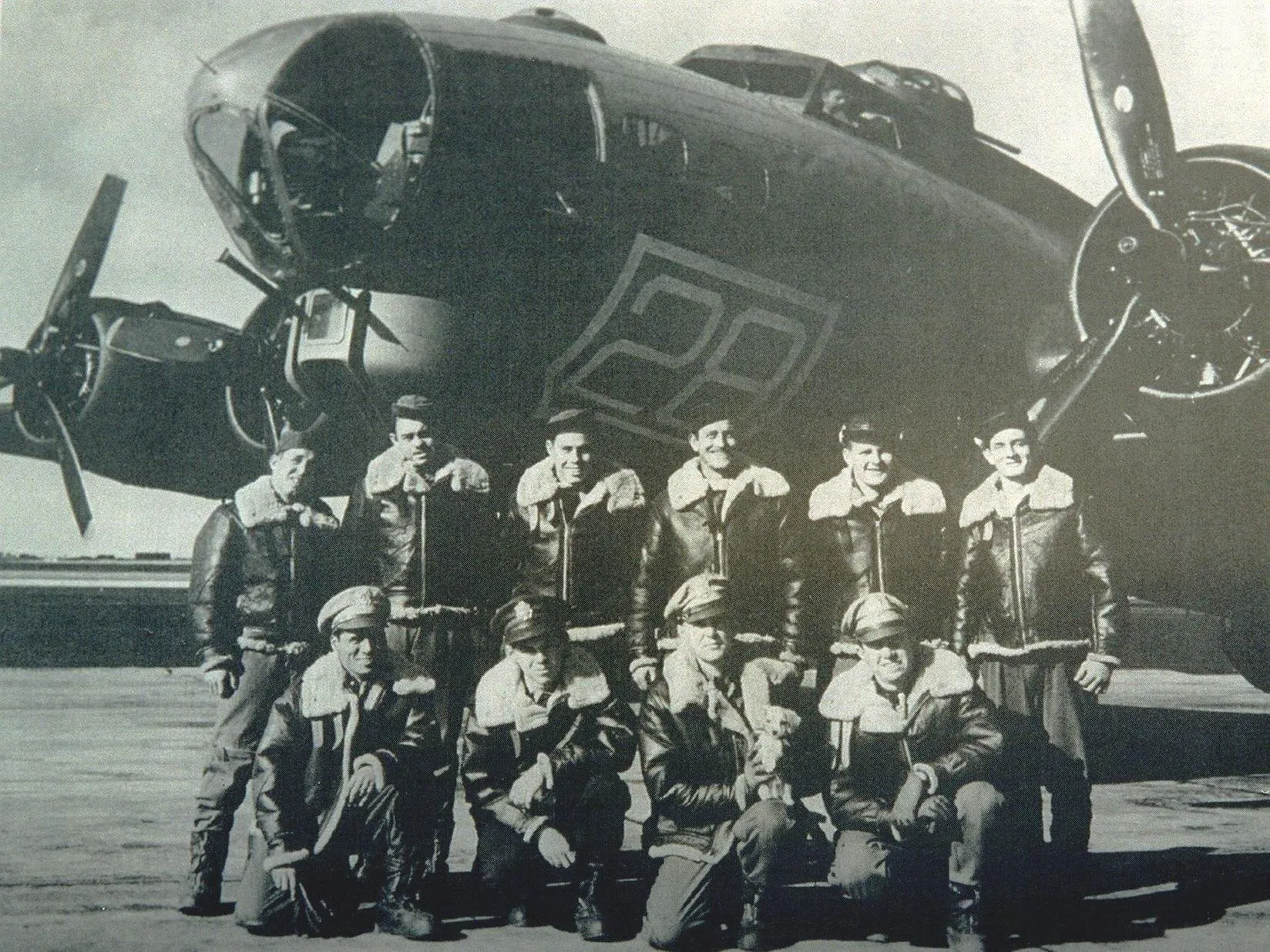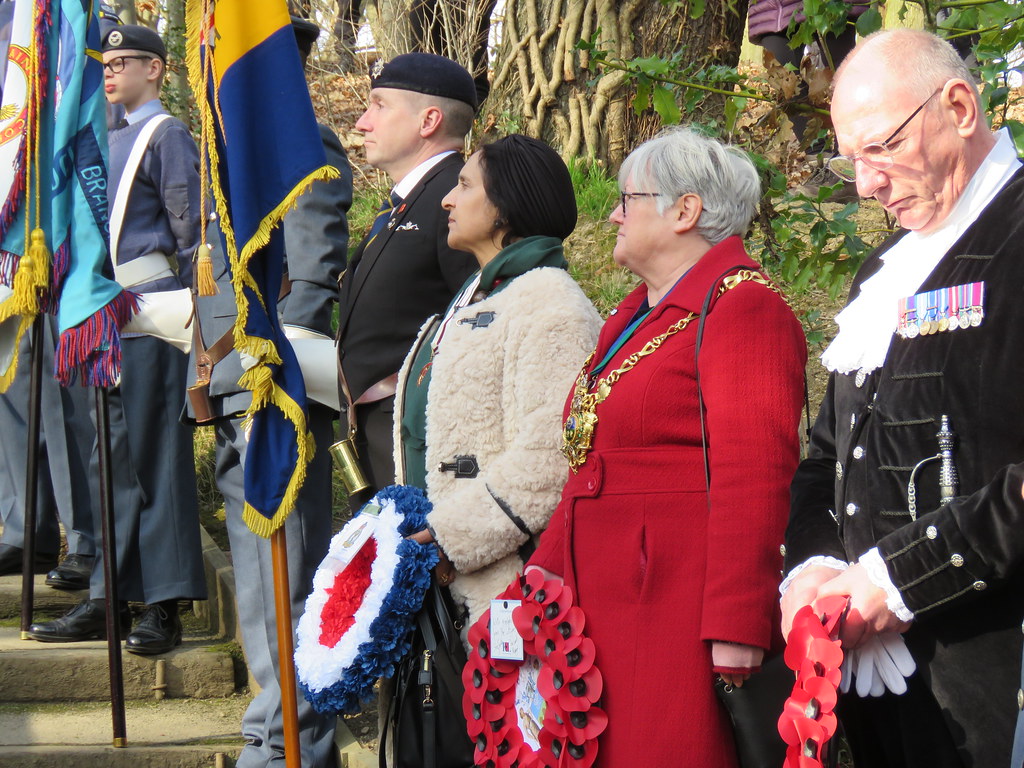Visitors to Endcliffe Park, a small green space on the west side of the UK city of Sheffield, might come across a curious monument. It begins with a large, permanent American flag. Then, they’ll notice several trees surrounding a large boulder. Flags representing the United States Air Force, small wooden crosses, and other tokens of appreciation flanking that boulder, which bears plaques and, often, ten photos of World War II-era airmen.
Those airmen, 1st Lt. John Kriegshauser, 2nd Lt. Lyle Curtis, 2nd Lt. John Humphrey, 2nd Lt. Melchor Hernandez, Staff Sgt. Harry Estabrooks, Staff Sgt. Bob Mayfield, Sgt. Charles Tuttle, Tech. Sgt. Malcolm Williams, Sgt. Vito Ambrosio and Sgt. Maurice Robbins fought to die on that spot in 1944 because the alternative was much, much worse.
The Tragic Flight of Mi Amigo
On February 22, 1944, the B-17 Flying Fortress, dubbed “Mi Amigo,” was sent on a bombing mission on an airfield in Nazi-occupied Denmark. The target air base was obscured by fog when the planes were supposed to go over the target, and German fighters shot down three of the formation’s bombers. Luftwaffe fighters also heavily damaged the Mi Amigo, and despite dropping its 4,000 pounds of bombs into the North Sea on its way home, it would still struggle to return to its base.

Honoring the Legacy of Mi Amigo’s Crew
By the time the Mi Amigo flew over Sheffield, its engines were failing, and it, along with its ten-man crew, were headed for a hard landing. But there was hope: Lt. Kriegshauser, the pilot, saw an open area, a large field in Endcliffe Park, where they might be put down and maybe even survive. Sheffield is a larger city, so there weren’t a lot of options for a clean touchdown.

As they approached the field, they saw a terrifying sight. There were children playing soccer on the field, right where the B-17 was trying to land. Instead of continuing onto the field and risking the children’s lives, the pilot was able to deftly adjust course, crash-landing the plane into a wooded area. Firefighters rushed to the scene but took over an hour to put out the blaze. All ten members of the Mi Amigo crew died in the crash, but none of the children playing nearby were hurt.

Kriegshauser was posthumously awarded the Distinguished Flying Cross for his quick thinking and skills in the cockpit. In 1969, the citizens of Sheffield commemorated the deeds of those airmen. They planted ten scarlet oak trees in their honor and held a small ceremony on the site where the boulder stands, a ceremony that has been repeated annually ever since.
Everyday Europeans have never forgotten the sacrifices of American men and women in defense or liberation of their countries. Just as the French and Dutch take care of American war dead in their respective countries, so too, do the citizens of Sheffield, one of the United Kingdom’s most working-class cities. A local man, Tony Foulds, witnessed the crash as a young boy and has maintained the monument ever since – for more than 75 years.
Read About Other Profiles in Courage
If you enjoyed learning about the crew of the Mi Amigo, we invite you to read about other battlefield chronicles on our blog. You will also find military book reviews, veterans’ service reflections, famous military units and more on the TogetherWeServed.com blog. If you are a veteran, find your military buddies, view historic boot camp photos, build a printable military service plaque, and more on TogetherWeServed.com today.

A good article on the events of February 22nd 1944 , however the Memorial was – as you state – not created until 1969. Mr Foulds, who only appeared on the scene in 2018 (as recorded in many accounts) is just one of several volunteers who sweep leaves from the site could thus not have looked after it ”for 75-years”. The Memorial belongs to Sheffield RAF Association and they, along with the city’s Parks Dept (who gifted the trees in 1969), are primary maintainers and in 2023 spent £15,000 refurbishing the Memorial Garden due to erosion, etc. The full account of the men, their aircraft and their mission that day, is told in ”Courage Above the Clouds” by Paul Allonby (lulu.com). Thank-you.